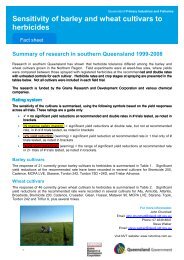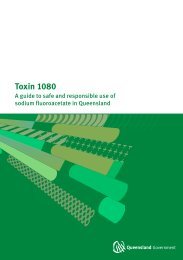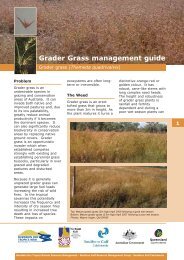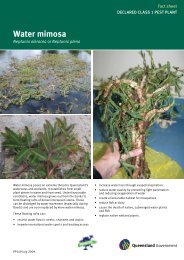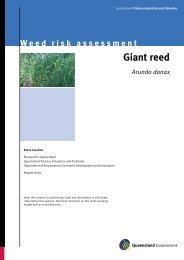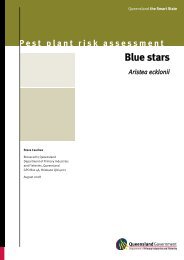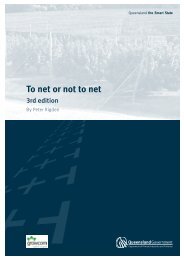Insect Control in Stored Grain - Department of Primary Industries
Insect Control in Stored Grain - Department of Primary Industries
Insect Control in Stored Grain - Department of Primary Industries
Create successful ePaper yourself
Turn your PDF publications into a flip-book with our unique Google optimized e-Paper software.
<strong>in</strong>volved. If this occurs use different <strong>in</strong>secticides for future treatments. However, don’t jump to the conclusion<br />
that every control failure is caused by resistance. Often the reason for control failure can be a problem with<br />
the dose rate or application technique.<br />
If you suspect <strong>in</strong>secticide resistance<br />
If you suspect resistance is caus<strong>in</strong>g control failures, you can have your <strong>in</strong>sect specimens tested for<br />
resistance. Please send live specimens <strong>in</strong> gra<strong>in</strong> to:<br />
Food Protection Team,<br />
DPI&F (Entomology)<br />
80 Meiers Road,<br />
Indooroopilly, Qld., 4068.<br />
(Phone: (07)38969433 or (07)38969807).<br />
NB: Please <strong>in</strong>clude your full contact details and details <strong>of</strong> previous gra<strong>in</strong> treatments.<br />
You can affect the build up <strong>of</strong> resistance by the control methods you use:<br />
• Repeated use <strong>of</strong> the same chemicals will speed up resistance development.<br />
• Use amorphous silica powder <strong>in</strong>stead <strong>of</strong> chemical <strong>in</strong>secticides for treat<strong>in</strong>g silo surfaces and storage<br />
areas after cleanup as this reduces selection for resistance to the chemicals.<br />
• Selection for resistance can also be m<strong>in</strong>imised by us<strong>in</strong>g the non-chemical control methods such as<br />
hygiene and aeration.<br />
17





